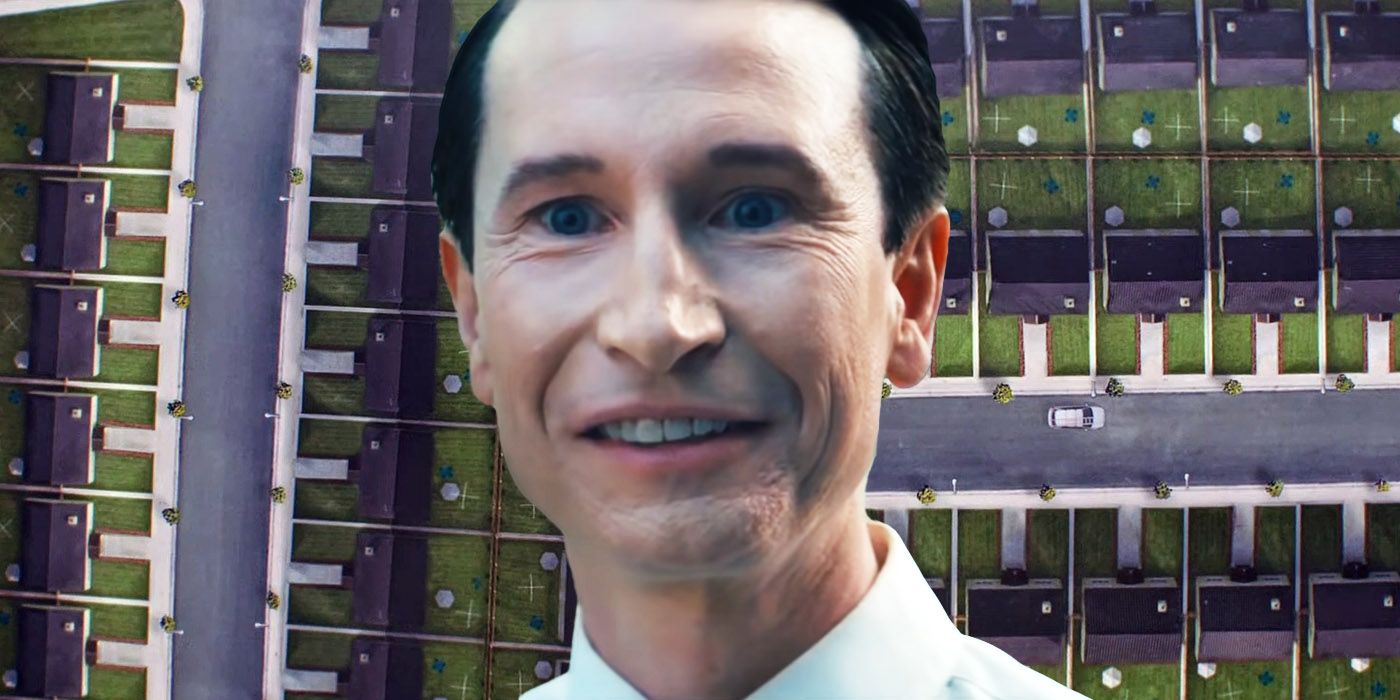
The sci-fi movie Vivarium, starring Jesse Eisenberg and Imogen Poots, focuses on the hellish suburbia that is the inescapable town of Yonder as the young couple is forced to raise an alien offspring; here's Vivarium's ending explained. Director Lorcan Finnegan's sci-fi thriller tells the story of a young couple trapped in a frightfully uniform suburban neighborhood that quickly reveals itself to be a nightmare. The movie centers on gardener Tom (Jesse Eisenberg) and kindergarten teacher Gemma (Imogen Poots), a happily unmarried couple who are looking to become homeowners. This leads them to visit a deeply strange estate agent named Martin (Jonathan Aris), who makes lavish promises of the beauty and perfection of a newly built development named Yonder and coaxes them into taking a tour of the neighborhood.
Vivarium's Yonder is a The Stepford Wives-type community, comprised of endless rows of wholly identical homes and roads that always lead back to the same place. Martin leaves Tom and Gemma at house number 9, and the two try to leave but end up going around in circles. This forces them to stay in the Yonder home. Since their attempts to leave end in continual failure, Tom tries to burn down the house out of frustration. The next morning, it's still there, seemingly rebuilt overnight, and now there is a box with a baby boy waiting for them. Attached is a note: "Raise the child and be released."
In Vivarium, Yonder's nameless offspring (Senan Jennings) rapidly grows in size and has an eerie adult-like voice that perfectly mimics both Tom and Gemma. Jesse Eisenberg's character spurns any attempt at fathering the child, while Imogen Poots' Gemma is worn down into a drudging facsimile of motherhood. The Boy screams like a banshee until he is fed. He refuses to leave Tom and Gemma alone for a second and he copies their every move. Tom becomes obsessed with their escape and begins digging a hole in their yard, while Gemma attempts to care for the child while maintaining some autonomy in the situation. What is the fate of Vivarium's couple? What exactly is Yonder and what's the real meaning of Vivarium's bizarre ending?
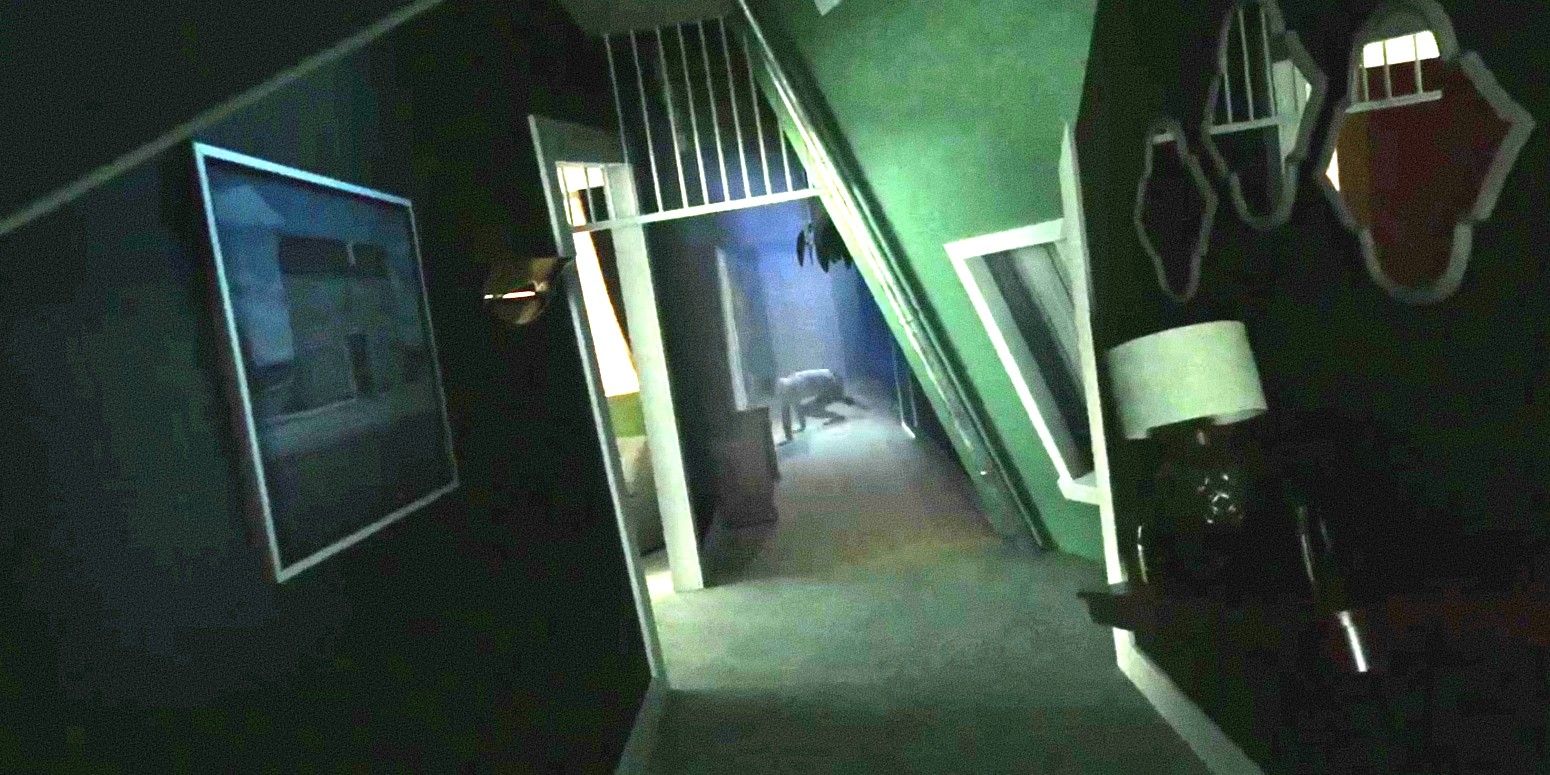
Towards the end of Vivarium, The Boy vanishes from Yonder and returns with a book full of symbols. In an attempt to find an escape, Gemma plays a game with The Boy to get him to reveal where he's been; only for him to begin mutating into a monster. Like something out of a John Carpenter sci-fi movie, the boy suddenly grows into a full-blown adult. Tom still digs his hole from morning until night, and eventually, The Boy locks his "parents" out of the house. He starts disappearing every day and Gemma's attempts to follow him prove fruitless. Eventually, Tom's hole yields a discovery of a corpse in a body bag. His own health rapidly worsens and he eventually dies in Gemma's arms. At that moment, having said that it's time for him to be "released," The Boy returns to them with a body bag. Shocked and disgusted, Gemma becomes furious enough to attack him with a pickaxe, but he escapes by pulling up the pavement like a rug and sliding into an Escher-esque underground.
Gemma follows and discovers that Vivarium's Yonder is full of endless parallel worlds where couples like her and Tom are stuck in identical situations. At this point it's clear Vivarium's alien invasion takes young couples captive as specimens in a deeply horrific experiment. Every single one of them is miserable, some even to the point of suicide. Gemma is spat back into her world and dies at the hand of The Boy after being vacuum-packed in a body bag. He dumps their bodies in the hole that Tom dug, fills it back in, and then leaves Yonder to return to the real estate office. There, Martin is old and on the verge of death (though only a year has passed). He passes on his name badge to The Boy and then dies, leaving the new Martin to take his place. A couple walks into the real estate office, and the cycle begins again.
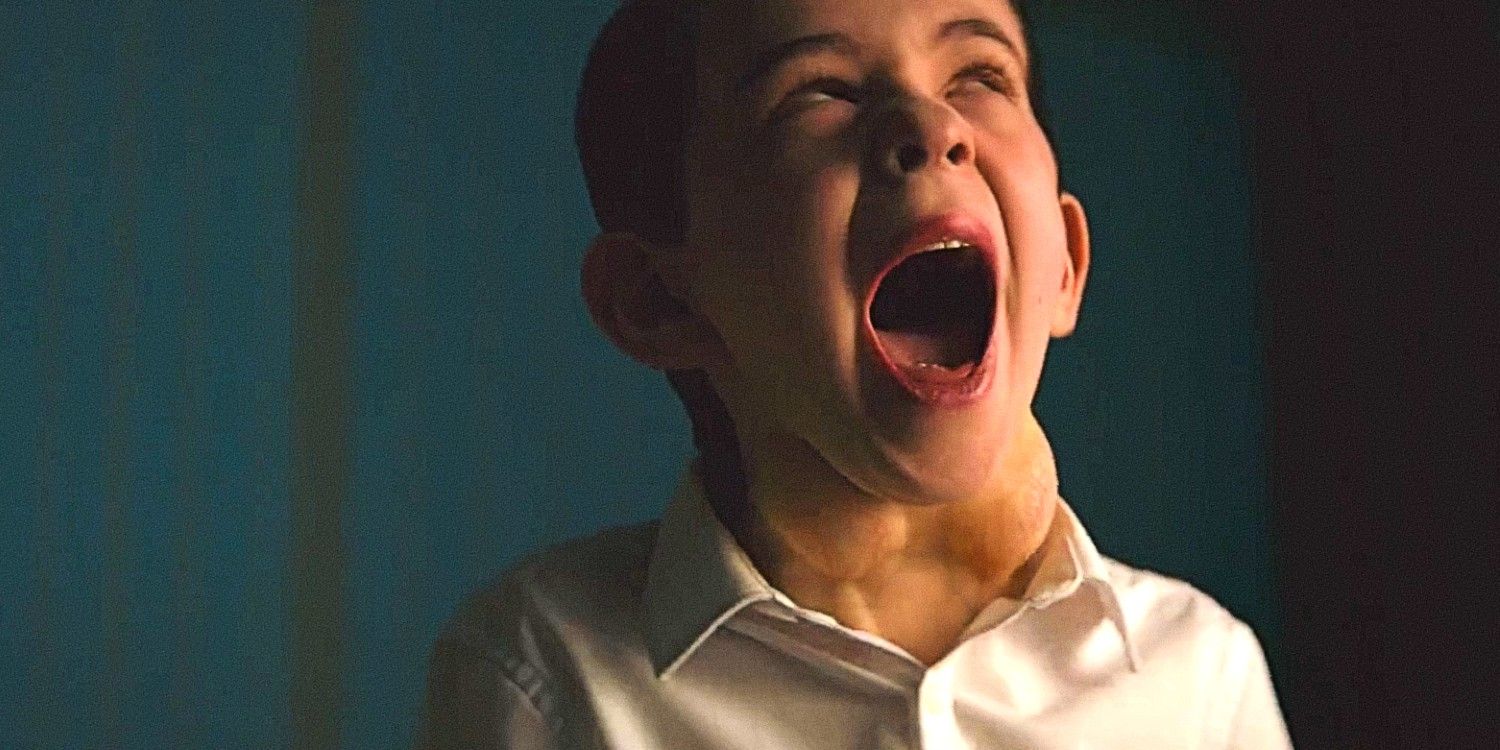
While it's never made explicit in Vivarium's ending, the most obvious interpretation of Yonder and the strange boy that Tom and Gemma are forced to raise is an AHS season 2 style alien abduction story. Based on Vivarium's ending, it seems that these aliens age rapidly, growing to adulthood within a year and declining from middle age to old age within the same space of time. They sustain themselves by trapping human couples in Yonder and forcing them to raise their weird children in order to continue the parasitic cycle. The aliens do not appear to form any kind of emotional attachments to their adoptive parents and do not grieve for them when they die. Further proof of the alien abduction theory comes in the form of the strange language that appears in the boy's book and the patterns that show up on the TV. Too, The Boy scuttling under the sidewalk and his horrific transformation add to this theory. The impossible space that Gemma stumbles into when she tries to chase the boy seems like an alien construct, as does Yonder itself.
The film explores Yonder's purpose through the metaphor of brood parasitism, a natural phenomenon in which some birds will lay their eggs in a stranger's nest in order to trick the other bird into raising their young. Vivarium opens with a shot of a newly hatched cuckoo pushing other baby birds out of the nest. The cuckoo eventually becomes so large that when its adoptive parent returns to feed it, the cuckoo looks like it's about to consume the adult bird's head — foreshadowing Vivarium's ending. The film takes the behavior of the cuckoo and reimagines it as an alien or extradimensional species that have invaded Earth and forces humans to raise its offspring by trapping them together in a "nest." Taking from influences like Village of the Damned, just as some female cuckoos are able to lay eggs that resemble the eggs of the bird species whose nest they are left in, the boy's species is able to imitate humans closely, but not perfectly.
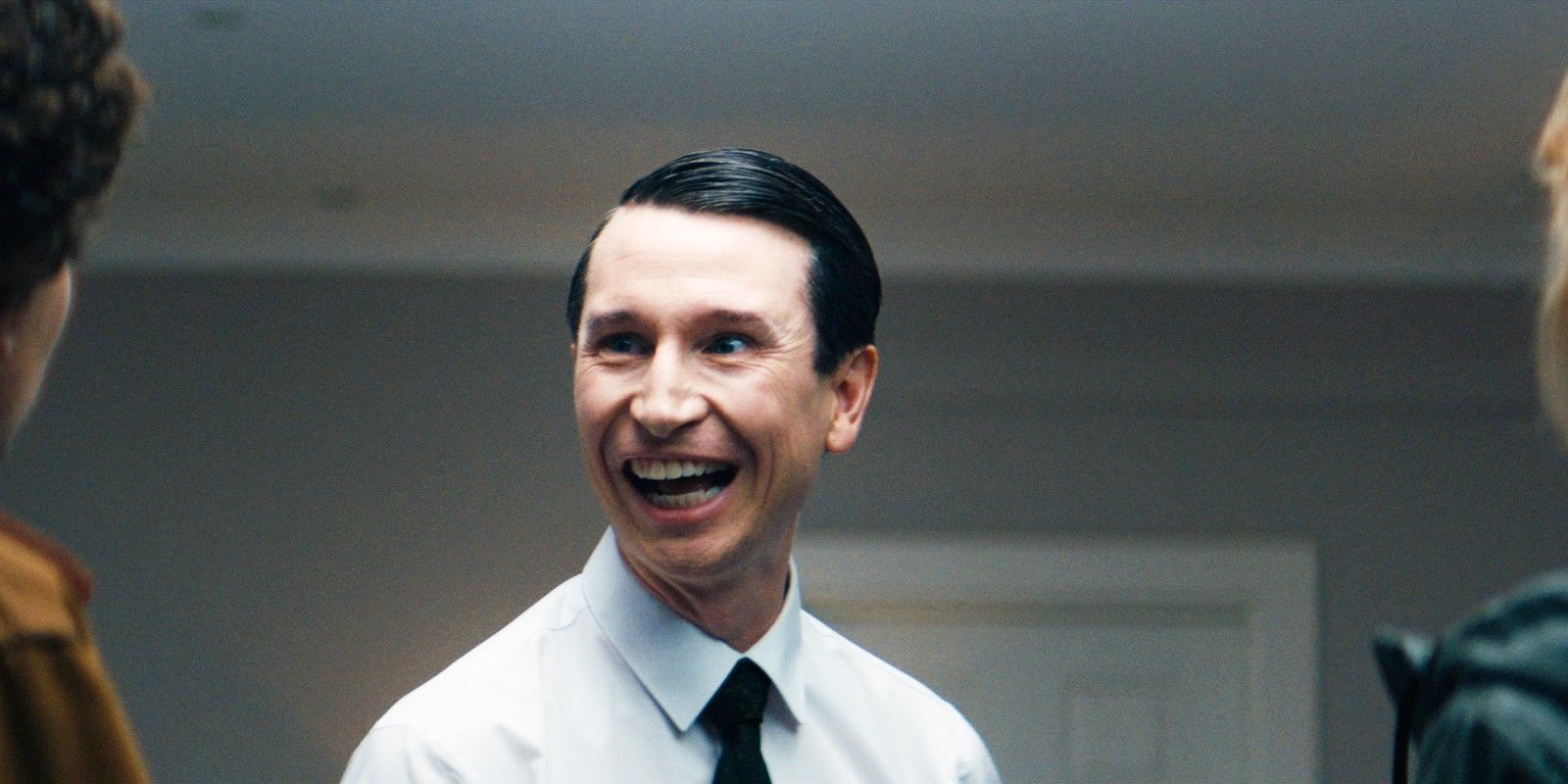
Martin is only seen in the very beginning and ending of Vivarium, but his odd character has a larger purpose within the overall story. His bizarre mannerisms, personality, and origins are only made clear when The Boy reaches adulthood. Martin and The Boy are the same exact thing: an alien child raised by unwilling humans. It's made clear during Gemma's descent that many other families probably don't succeed in raising their prescribed offspring. While it's never explored what happens to those children, Martin is an example of a Yonder "success" story. The alien species seems to maintain their invasion through this strange life cycle. Martin is an alien offspring that a previous Yonder family raised to completion, like The Boy. In Vivarium's ending, The Boy takes his place as the new Martin, in order to attract new victims to make the next Martin.
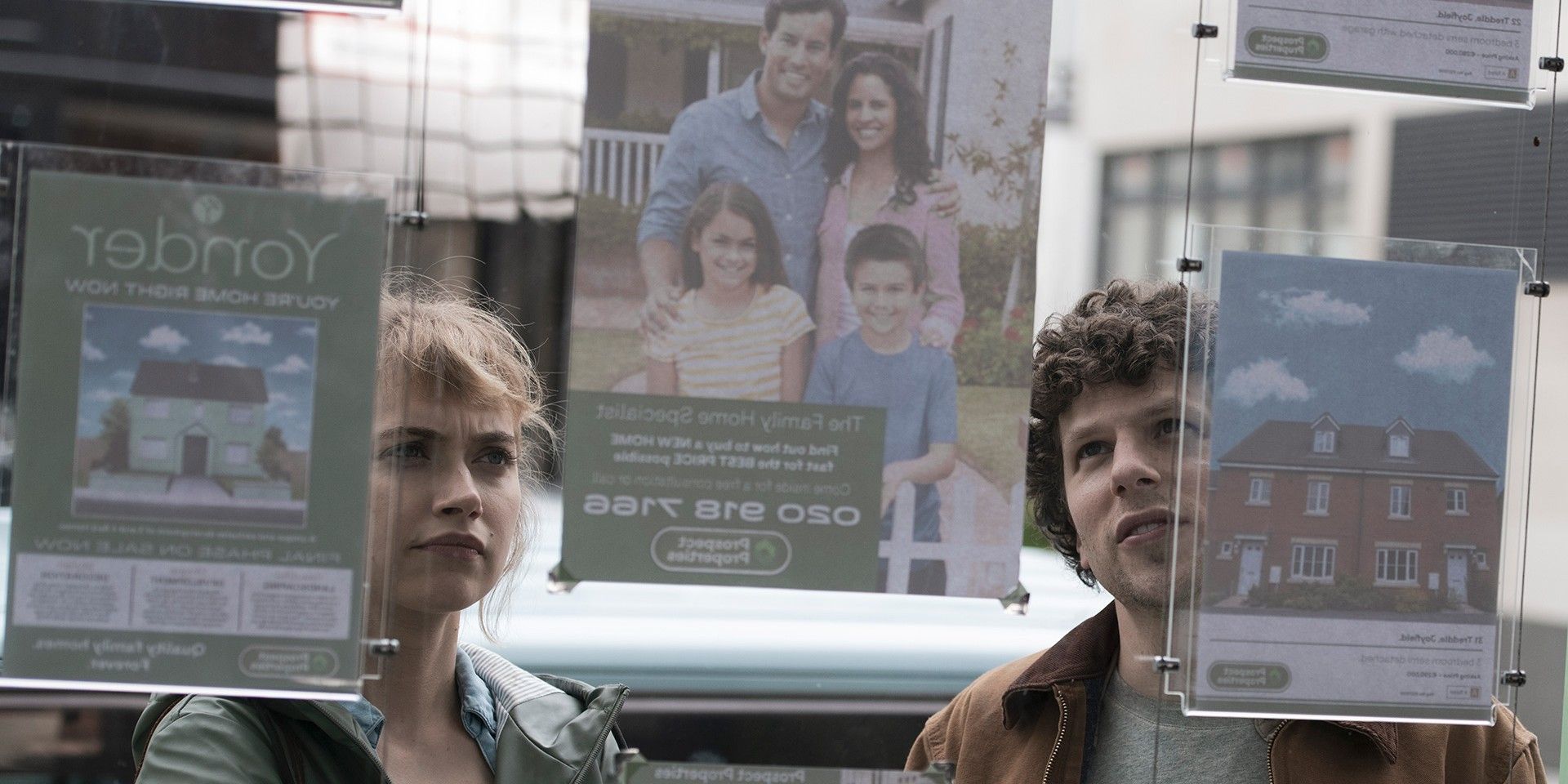
At its heart, Vivarium is a familiar story about the smothering confines of a supposedly ideal life that has been commodified for the masses. The white picket fence dream remains a potent force in society, and it’s one that’s become ever more unattainable to the younger generations, making the forced fantasy all the crueler. Tom and Gemma are literally stuck in this heteronormative structure of what a couple is “supposed to do” as they get older. They have been forced into the suburban life, a home they despise, a routine they grow resentful of, and a child neither of them wanted. Like David Lynch's Eraserhead, they are now stuck on a path for life that is both mundane and horrifying: One that ends in their deaths and their bodies left to rot. They aren’t alone in this nightmare either, as the parallel worlds of Yonder reveal. This is the world that awaits the white heterosexual middle-class couples to whom this fantasy is primarily sold.
Interestingly, Tom and Gemma never ask out loud why they have been trapped in the world of Yonder. They just get on with it because they have to. This is partly what makes Vivarium so fascinating: It is keenly aware of the suffocating expectations placed upon people to adhere to societal norms, even as they become more unattainable and less desired by younger generations. While other movies like David Fincher's Fight Club explore similar themes, Vivarium also tackles the complex subject of parenthood. Here, to be a parent is to be forced into a one-sided parasitic relationship that will sap you of your very life essence. Tom and Gemma did not want a child but the society of Yonder demanded it, and the boy who grows in years as the days pass is unnerving, lacks imagination, and is utterly helpless without them. It's a blunt metaphor for the realities of parenting, but most stories end such narratives in a happy way, revealing how it was all worth it in the end.
There have been plenty of tales about the hell of suburbia, and Vivarium is not shy about wearing those influences on its sleeve. Blue Velvet comparisons are easy to make. The film is also reminiscent of several episodes of The Twilight Zone and classic sci-fi horror movies like Village of the Damned, Rosemary's Baby, and Invasion of the Body Snatchers. Vivarium is a film with the sheer guts to position the act of being parents as potentially the worst thing one could do with their life. That remains one of society's true taboos and Vivarium pulls no punches with it. Even when Gemma shares tender moments with the boy, she absolutely refuses to let him call her his mother. Her dying words to him are just that: "I am not your f***ing mother." It's a final act of defiance that verbalizes countless people’s lives, both within Yonder and in the real world.
from ScreenRant - Feed https://ift.tt/2XaLPNO
